| 5 stars | 1 |
| 4 stars | 0 |
| 3 stars | 0 |
| 2 stars | 0 |
| 1 stars | 0 |
Follow up osteopathic treatment
Are you continuing your osteopathic care? Our follow-up osteopathic treatment is designed to build on your progress and fine-tune your recovery. Whether you’re managing long-term pain, stiffness, or a recent injury, this session supports your journey to optimal health.
Before treatment begins, your osteopath reviews your health history and medical data, such as X-rays, MRI scans, or blood tests. This helps enhance diagnosis accuracy and deepens understanding of your condition. Although osteopathy is a hands-on therapy, having objective test results can increase confidence in your treatment plan.
The osteopath will perform detailed manual assessments, inspecting posture, symmetry, and muscle or fascia tension. Even if you have a specific complaint—like neck or back pain—the body is examined as a whole. That’s because the root cause may lie elsewhere. For example, an old scar or pelvic distortion can disrupt body alignment and trigger headaches or knee pain.
👐 Relieve Pain & Restore Balance ✔️ Book Now! ✨
We recommend bringing any recent medical reports to your appointment. Please also wear comfortable underwear or a swimsuit, as you’ll need to remove outer clothing for examination. This allows the osteopath to analyse your body’s balance and fully identify hidden dysfunctions.
Your follow-up osteopathic treatment happens in a calm, supportive space. The session helps relieve built-up tension, improve mobility, and promote natural healing. Many patients feel reduced pain and increased freedom of movement after just a few treatments.
If new findings arise, your osteopath will explain them and adjust your personalised care plan. You’ll also receive practical advice on exercises or lifestyle changes to support recovery between sessions.
This is your chance to take control of your well-being and keep progress on track. Let’s work together to restore your body’s natural balance and help you feel your best.
Ready to continue your healing journey? Book your follow-up osteopathic treatment today and experience the benefits of expert, hands-on care.
1 review for Follow up osteopathic treatment
Add a review
What is osteopathy? Osteopathy is a holistic approach to treating a wide range of aches, pains and stiffness anywhere in the body.
Osteopathy assesses the patient from a mechanical, functional and postural standpoint. The practitioner uses a highly evolved sense of touch to investigate the underlying causes of pain. He also needs it to determine tension and restrictions in the body. These and a detailed patient history can help establish a diagnosis. Osteopathic treatment aims to reduce tension and restrictions, restore balance, and reduce symptoms of pain or stiffness.
A noninvasive, hands-on approach using muscle and soft tissue stretching, rhythmic joint movement, or manipulation techniques helps achieve this. These manual techniques are adjustable to suit each individual's needs and help improve the range of motion of a joint or reduce tension in a muscle.
Symptoms can result from a previous injury, a childhood condition, poor posture, injury, ageing, poor health, stress, and tension. The osteopath observes asymmetry, misalignment, and tension in the patient and uses this information to help restore proper function during treatment. Osteopathy focuses on treating the underlying or predisposing factors contributing to the patient's symptoms. Some of the procedures are performed away from the site of the pain.
Principles of osteopathy
A basic osteopathic principle is that the body can heal itself. Therefore, the osteopath aims to help restore proper structure through soft tissue massage, mobilisations, joint manipulation, and other techniques. Restoring adequate structure helps return the body to normal function, reducing symptoms.
Our osteopath treats each patient individually and gives them the best possible attention. He will also create a personalised treatment plan for you. That plan will contain short, medium, and long-term management strategies, such as exercises and general lifestyle advice.
On average, you'll need two or three treatments. However, for some patients, just one treatment can give complete relief. The number of treatments depends on the individual, the type of problem, and how long the person has had it. We can discuss it once the diagnosis has been made.
The General Osteopathic Council regulates osteopaths. Besides, they undergo rigorous training and Continued Professional Development.
The osteopath will deliver a comprehensive clinical (classic neurological) and osteopathic diagnosis and determine the leading lesion by combining these sources with osteopathic manual tests, inspection data, and palpation. Of course, osteopathic diagnosis is self-sufficient and does not require mandatory instrumental confirmation. However, the presence of an additional data source that objectively coincides with the data obtained by hand positively affects the osteopath's and their patients' confidence. It would also increase the accuracy of the diagnosis. Additionally, changes in blood, ultrasound data, or radiographs are beneficial. It allows those to be a starting point for subsequent monitoring of the osteopathic treatment course.
The osteopath must examine before osteopathic treatment.
Please note that you must remove your outer clothing during the first session. We recommend wearing comfortable underwear or a one-piece swimsuit. It'll let the osteopath perform an examination, analyse body symmetry, and change shapes, contours, and colours. Besides, it will help perform specific manual tests that involve muscle and fascia tension. You may need to examine the whole body, even if you have only local complaints, such as pain in the head or neck. We relate it to the fact that the specialist can locate the leading osteopathic damage (root, primary, causative dysfunction) at a considerable distance from the discomfort point. So, a distortion in the pelvic region will affect the position of the skull and cervical vertebrae. Similarly, the scar remaining after the appendix removal may contribute to the displacement of the hip joint, and as a result, cause pain in the right knee.The consultation takes place in a comfortable environment. The service aims to identify the patient's problems, make a diagnosis, and relieve stress or existing limitations. Initial osteopathic treatment helps reduce tension and restrictions, restore balance and alleviate symptoms of pain or stiffness. It includes consultation. If necessary, the osteopath will prescribe a treatment and advise on the subsequent stages of treatment.
Allow at least an hour for the initial consultation and treatment. For follow-up procedures, you may book a 30-minute appointment with an osteopath.
What to expect at your appointment with an osteopath?
During your first appointment, an osteopath will take a detailed case history. It will help make a diagnosis and provide a better understanding of your problem. Your lifestyle and physical stresses help aid a diagnosis. A review of your current health status is essential to help complete the picture and ensure that no underlying conditions exist that osteopathic treatment might aggravate after the appointment with an osteopath.
After the osteopath takes your case history, you will undergo a structural examination. It is a visual and hands-on evaluation of the body while standing, sitting and lying down. It is, therefore, best performed with the patient in their underwear to allow a clear view of the structure.
You may choose to bring shorts and a sports top or wear the provided gown. You may ask to perform specific movements during your examination to assess the range of motion in the joints.
Examination at the appointment with an osteopath
After the investigation, the osteopath will discuss the findings and diagnosis, and treatment will begin. Soft tissue massage, joint mobilisations, and manipulation are standard techniques we use during the procedure.
Your comfort is essential and will guide the treatment after the appointment with an osteopath. Also, you may request a procedure modification to suit you for maximum comfort.
Treatment is a two-way process; therefore, communication is vital. Discuss this with the osteopath if anything is uncomfortable or you're worried about any aspect of the procedure.
Your visit will conclude with recommendations for reducing symptoms between treatments and suggestions for activities, exercise, or lifestyle changes that can help address any underlying imbalances, further reducing symptoms and preventing future recurrence.
CANCELLATION POLICY
If you need to cancel your appointment with our osteopath, don't hesitate to contact us before 5:00 PM the day before your visit. A late cancellation fee will apply.
Conditions treated by osteopaths.
An osteopath treats many conditions that present with aches, pains, or stiffness in joints or tendons at any site on the body. Musculoskeletal pain and injury are commonly referred for treatment, especially for patients with neck or back pain. However, other conditions may benefit from osteopathy.
Besides, most people believe osteopathy only treats back and neck pain. It is, in fact, a holistic therapy that can treat a wide range of complaints about most parts of the body.
Common COMPLAINTS osteopath
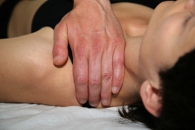
Common complaints include stress, tension headaches, back pain, neck pain, whiplash, disc injuries, repetitive strain injuries, carpal tunnel syndrome, arthritic pain, postural problems and much more.
Call Gilly for advice on whether your specific condition will benefit from osteopathy.
Shoulders can be prone to injury, and many structures can cause pain. Shoulder pain may result from direct trauma, sports injury, poor posture, repetitive actions, or other conditions, such as frozen shoulder or osteoarthritis.
Osteopath treats BACK OR NECK PAIN.
These are commonly treated conditions for which osteopaths may provide effective relief.
POSTURE-RELATED PROBLEMS
Very few of us have good posture. So, this may be exacerbated by sitting at a desk for long periods. Unfortunately, a sedentary lifestyle is the most common cause of health problems. Those may include:
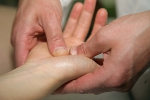
- scoliosis and sciatica,
- Comfort eating and obesity,
- Inflammation of various body tissues,
- disruption of internal organs' functions,
- low motility of the intestinal muscles and the gall bladder,
- malfunctioning of most eliminating organs like the kidneys and liver,
- fluid retention or lymph retention,
- cardiovascular system problems and heart diseases.
However, there is a way to prevent all of them. Contact us to book a comprehensive consultation and treatment at our facility in Holborn, London.
PROBLEMS RELATED TO REPETITIVE ACTION
Repetitive action can also lead to symptoms of pain, pins and needles, numbness or weakness in the arms and hands.
PARKLAND NATURAL HEALTH, 239 High Holborn, Camden, WC1V 7EW
By Foot
We are behind the Holborn tube station on Little Turnstile. Go east on High Holborn for 50 meters from the tube station, turn right at Pret a Manger, and walk down Little Turnstile for 5 meters. Little Turnstile is a historic mews parade tucked behind the main road. Enter that little alley, and Parkland Natural Health is on the right.
By tube
Select Piccadilly or Central line to Holborn.
By bus
Buses 1, 8 and 521
Working hours
| Monday | 10 am - 8 pm |
| Tuesday | 10 am - 8 pm |
| Wednesday | 10 am - 8 pm |
| Thursday | 10 am - 8 pm |
| Friday | 10 am - 8 pm |
| Saturday | 10 am - 8 pm |
| Sunday | 10 am - 6 pm |
GILLY ARBUCKLE B.OST
Doctor of Osteopathic Medicine at the Parkland Natural Health Clinic Gilly found an interest in Osteopathy after a back injury sustained whilst working with adults with disabilities in 1997. The treatment, advice and long term management he received led to an awareness of the body’s innate mechanism for activating healing and how to avoid injury. He studied human biology, physiology, anatomy & massage and went on to qualify as an Osteopath at the British School of Osteopathy. He has been treating holistically for six years. Gilly is registered with the professions’ governing body, the General Osteopathic Council (GOsC) and is a member of the British Osteopathic Association (BOA). His areas of particular interest are sports therapy (including athletes/dancers) and management of long term postural dysfunction.



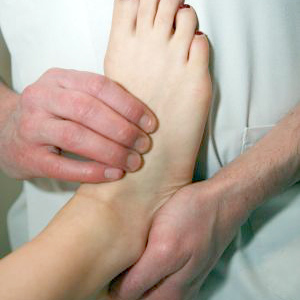
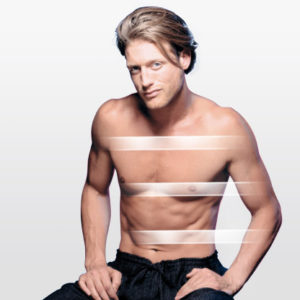
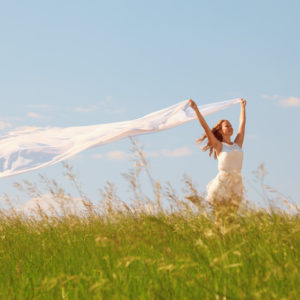

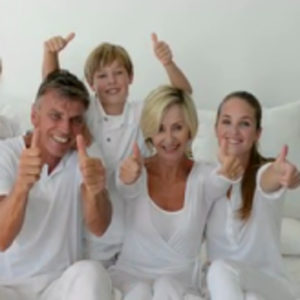


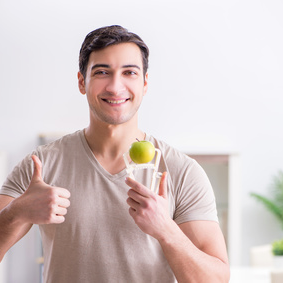

Inessa P. –
Gilly is the best osteopath I’ve ever seen. He is very knowledgeable and informative. His hands are amazing and my neck does not hurt any more.*